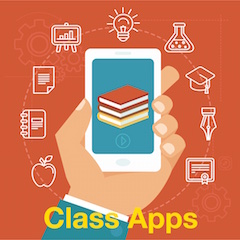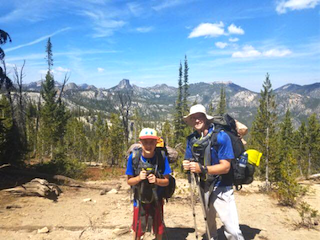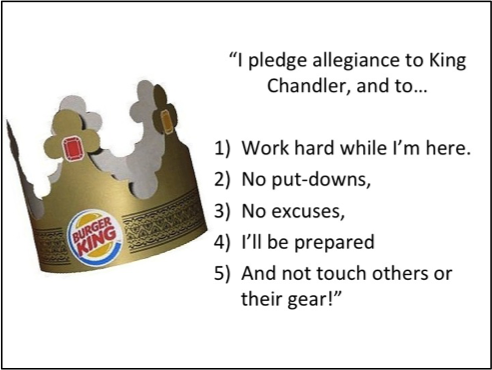How Can We Improve the First Days of School?
 Last week I went to register my sons for school. As we mulled around in line, I spent a bit of time visiting with each of them and their friends about what they looked forward to the most – and LEAST – about the first couple of days.
Last week I went to register my sons for school. As we mulled around in line, I spent a bit of time visiting with each of them and their friends about what they looked forward to the most – and LEAST – about the first couple of days.
There were few surprises when it came to what they were most looking forward to. They talked about spending time with friends, finding out who was in their classes, showing off new clothes, and meeting their teachers.
I was surprised, however, when it came to what they were LEAST looking forward to. Below are a few things they said:
- “All we do is spend the first few days talking about rules…”
- “Each of my teachers always does the same thing. They go over the syllabus and behavior stuff, but we don’t really do anything.”
- “The first couple of days are just boring…”
- “…I know the teachers think it’s important to explain what they expect and want us to do, but when every single one of them does it, all their rules end up being a blur that I can’t remember or really don’t pay attention to.”
- “It’s a waste of time for teachers to spend so much time on the rules. The students that take class seriously are the ones that don’t need to hear them. They would rather get to work. The students that need to hear them are the ones who usually aren’t paying attention or aren’t going to follow them anyway.”
Meeting the Teacher and Tackling Problems
One approach to the first day(s) might be to combine a quick get-to-know-the-teacher activity with a challenging, real-world problem or two. A teacher friend of mine always starts the first day of class by sharing a little bit about an activity that he did over the summer, accompanied by a deeper-level thinking task for students.
One year, he talked to his new students about his trip to the state fair and asked them to brainstorm, describe, and build a new amusement park ride that would be safe, but still likely to draw a crowd and increase ticket sales. Their models had to “work” much like the actual ride would and could only be made from recyclables or from materials they had lying around at home. Here is one my favorites that one of his students put together.
Another time, he talked about a movie that he saw over the break (kid friendly of course) and showed some sample movie reviews from national and local news sites. He then asked them to pick a movie (or book) they had watched/read within the past year and create a review in a format similar to that of the news sites. The catch was they couldn’t pick a movie/book that they had a strong like or dislike for. In the meantime, he was also able to gather some preliminary samples of writing and analysis.

Low-risk Learning the 1st Days of School
One of the best ways to set a classroom climate of safety and productivity is to get students started on low-risk, yet challenging thinking tasks during the first day(s) of class. These activities should be engaging, interdisciplinary, foster classroom interaction, and allow teachers to observe and get to know their students a bit better. For example…
- Collaborative, discussion-based challenges such as the Castle Problem
- STEM and STEAM challenges from sites like EGFI and TeachEngineering
- Design Squad’s problem-solving ideas in the projects and building activities
- Social Ice Breakers from Cult of Pedagogy and other games to help students make connections with each other
- Brain teasers and logic puzzles from sites such PuzzlePrime, Braingle, SharpBrains, and PuzzleFry
Clever, Clear, and Consistent
I’m not suggesting that we eliminate rules, procedures, course information, and behavioral expectations from our ‘first days of school’ repertoire. After all, the design, clarity, and implementation of these classroom elements can/do have a tremendous impact on student learning (Marzano, 2009; Lester, Allanson, & Notar, 2017). But how we present them to students can make a world of difference.

I finally settled on a cheap prop (a Burger King crown that comes with the kid’s meal) and a fun-ish chant that my students and I could repeat and discuss together. As soon as the bell rang, I announced that we would start by reviewing classroom expectations.
There were the usual ‘sighs’ from students and few ‘groans’…until I donned my crown and asked them all to rise and listen carefully. They looked confused, but intrigued. In the most regal voice I could muster, I chanted…
“I pledge allegiance to King Chandler, and to…
- Work hard while I’m here.
- No put-downs,
- No excuses,
- I’ll be prepared,
- …And not touch others or their gear!”
I increased my volume significantly during the final line. As a class, we then repeated the chant couple of times together and sat down.
I quickly explained that while I am not a king, I expected each one of us (myself included) to seek to learn as much as possible during class…and to help others do the same. The ‘pledge’ that we repeated was simply a way make it easier to remember a handful of specific things we could/should expect of each other.
It was remarkable how posting the expectations and repeating them from time to time made it easy for me (and my students) to provide gentle reminders throughout the rest of the week and the throughout the school year. Off-task and disruptive behavior decreased significantly, while student participation in enforcing the rules increased dramatically.
Hit the Floor Running
Most students are excited to get back to school, but anticipate boredom and mundane tasks during the first couple days. Why not do a bit more to help them hit the ground running?
As educators, we can’t underestimate first days of class. We really only get one chance to make a good impression…to establish rules, procedures, and a climate of fun, challenge, and learning.
References
Marzano, R. J. (2009). A handbook for classroom management that works. Upper Saddle River, N.J: Merrill.
Rawlings Lester, R., Bolton Allanson, P., & Notar, C. E. (2017). Routines are the foundation for classroom management. Education, 137(4), 398.






































Such engaging ideas! These are perfect for middle school!!